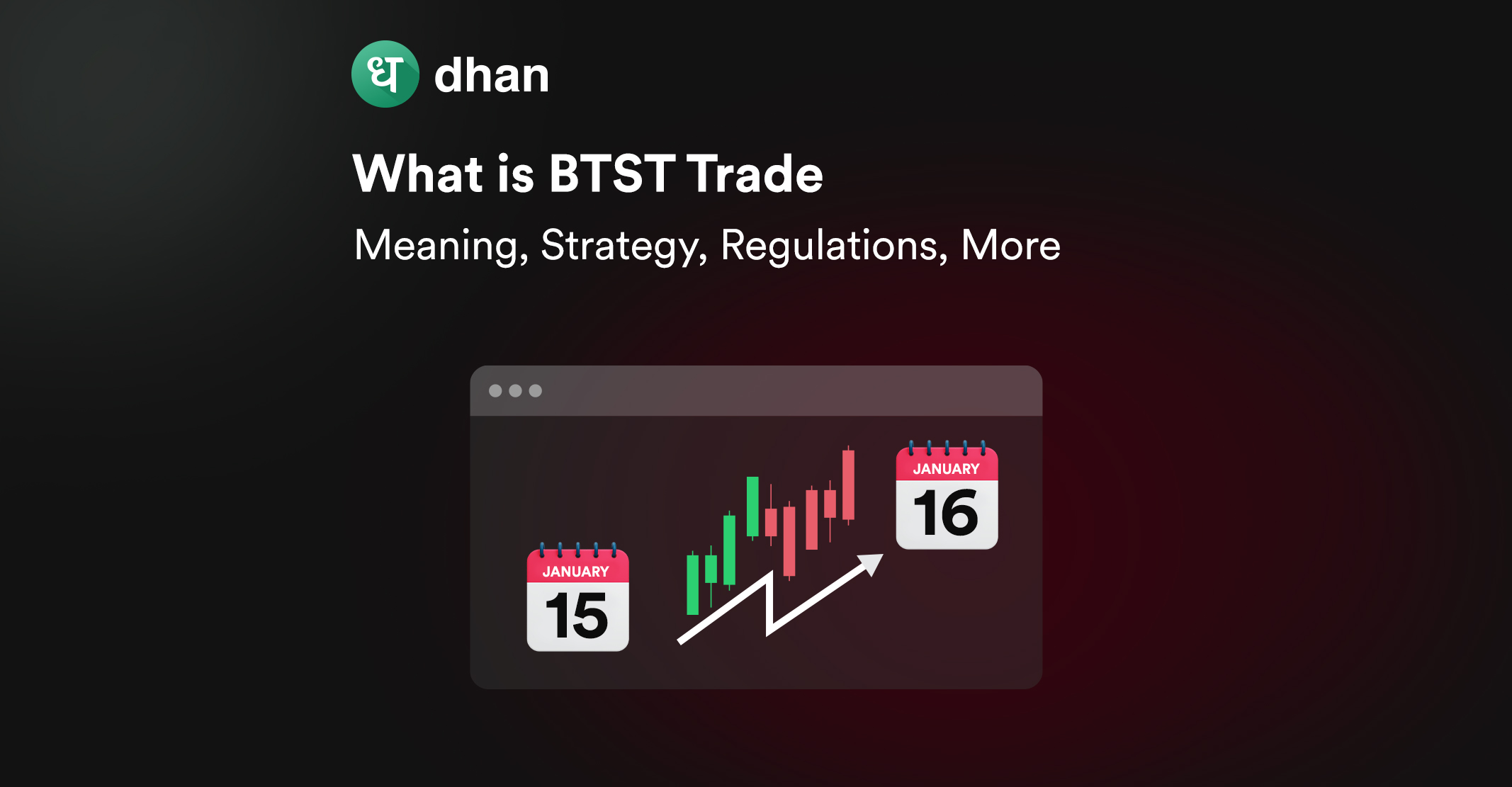You must have heard of day trading, a form of buying and selling shares on the same day. The opposite of this is delivery trading where you take shares into your demat account and hold it for months or years. Guess what?
There’s a form of trading between these two known as BTST or Buy Today, Sell Tomorrow. Through BTST you can take advantage of short-term, overnight fluctuations in the market.
In this article, we will walk you through BTST trades in detail, starting with what it means to the regulations that govern it.
What is the BTST Trade?
BTST or Buy Today, Sell Tomorrow is a type of trading that involves buying a stock and selling it the very next day. It allows traders to take advantage of short-term price volatility in stock markets.
The shares are thus sold before settlement, which is currently T+1 days in India. Effectively, the shares you initially bought never reach your demat account. There is a catch, however.
When you sell shares, you receive the corresponding amount in your trading account. In a BTST trade, you can’t use that amount on the same day, that is immediately, due to SEBI regulations. You’ll have to wait until the next day.
How Does BTST Work?
Now that you know what BTST trade means, let us understand how BTST works. BTST trading lies between delivery trading and intraday trading.
In delivery trading, when you buy the shares in the stock market, the delivery of the stock takes T+1 day. T here stands for the day of trade.
On the other hand, the seller will also receive the credit on T+1 day. So, if the price of a stock rises before T+1 day you can’t take any action.
While in intraday trading, you buy and square off the position on the same day. However, if there are chances of a price increase then you want to hold the position.
In such a scenario, you can apply BTST the next day before the delivery of stocks and benefit from market volatility.
Let’s understand BTST with an example. You buy 100 shares of ABC company at ₹500 on Monday. Now you sell these shares on Tuesday at ₹600. Here you earn a profit of ₹10,000.
You can’t use the credit received after selling your BTST stock on the same day as a result of recent SEBI regulations.
Regulations in BTST Trade
There are certain regulations laid by SEBI for BTST trade which are as under: –
1. SEBI introduced new trading margin rules which came into effect from 1st Sept 2022. As per this new rule you need to have 40% of the upfront margin for BTST trades. 20% margin for buying and 20% margin for selling. A penalty will be imposed if you fail to maintain this.
2. If a seller in BTST sells the share but is unable to deliver the same, then he has to bear the auction penalty. This penalty starts from 0.5% to 1% and can go up to 20%. This is in line with the short-selling rules.
3. Brokers don’t provide a margin facility for BTST. You will have to put in the entire money to buy the shares.
Factors to Consider for BTST Trading
BTST trading has risks as well as rewards. Let us understand some of the strategies that can be used to get maximum rewards from BTST trading.
1. Put a Stop to Loss
Through the BTST trading strategy, you can earn profits but markets are volatile. At any point in time, the prices of shares can go down. The stop-loss feature can protect you from this and minimize your loss.
Stop loss is a price point at which the sell orders get executed automatically. You can apply the stop loss before executing the trade. If the price of the stock goes down then the trade gets executed at the determined stop loss price and restricts your loss.
2. Analyse Candlestick Charts
Candlestick charts are used by traders to determine patterns of short-term price fluctuations in stock prices. You can analyze the candlestick chart to determine BTST stocks.
Major price movement in stocks happens at the close of trading hours after 3 p.m. The upward trend in stocks during this time indicates holding the stock for BTST trading.
3. Select Liquid Stocks
BTST trading is possible in liquid stocks which have high volatility. It is easy to find enough buyers for these stocks. Large-cap stocks and index-based stocks are known to be liquid stocks.
4. Keep an Eye on Key Events
The stock market is affected by various events like mergers and acquisitions, natural calamities, announcements by RBI, financial performance by the company, etc. Keep an eye on such events.
5. Margins
You’ll have to typically pay the entire margin to take a position since the trade is effectively “delivery” on paper. But there are features such as MTF on Dhan that allow you to get up to 4x leverage for BTST positions.
Conclusion
BTST works on the concept of exploiting overnight price movements in stock markets. It sits in between intraday trading and delivery trading, and must be engaged with using caution and extensive research.
Understand the various rules and regulations related to BTST, make your trading strategy bulletproof, and ensure that your trading system is battle-tested.



